Properties
| Storage Buffer | PBS pH7.4, 50% glycerol, 0.09% sodium azide *Storage buffer may change when conjugated |
| Storage Temperature | -20ºC, Conjugated antibodies should be stored according to the product label |
| Shipping Temperature | Blue Ice or 4ºC |
| Purification | Protein G Purified |
| Clonality | Monoclonal |
| Clone Number | N245/36 (Formerly sold as S245-36) |
| Isotype | IgG2a |
| Specificity | Detects ~35-55kDa. Does not cross-react with TARPGamma3. |
| Cite This Product | Stargazin Antibody (StressMarq Biosciences | Victoria, BC CANADA, Catalog# SMC-422, RRID: AB_2701343) |
| Certificate of Analysis | 1 µg/ml of SMC-422 was sufficient for detection of TARP Gamma2/4/8 in 20 µg of rat brain lysate by colorimetric immunoblot analysis using Goat anti-mouse IgG:HRP as the secondary antibody. |
Biological Description
| Alternative Names | CACNG2, Calcium channel voltage dependent gamma subunit 2, CaV gamma 2, Ipr328, MGC123981, MGC138502, MGC138504, Voltage-dependent calcium channel gamma-2 subunit, Neuronal voltage-gated calcium channel gamma-2 subunit, Stargazin, Stg, Stargazer, TARP, TARP gamma-2, Transmembrane AMPAR regulatory protein gamma-2, AW060990, B230105C07Rik, B930041E13Rik, Wag, Waggler |
| Research Areas | Calcium Channels, Cell Markers, Ion Channels, Neuron Markers, Neuroscience, Postsynaptic Markers, Voltage-Gated Calcium Channels |
| Cellular Localization | Membrane |
| Accession Number | NP_445803.1 |
| Gene ID | 84347 |
| Swiss Prot | Q71RJ2 |
| Scientific Background |
Stargazin, also known as CACNG2, is a transmembrane protein originally classified as a subunit of voltage-gated calcium channels (VGCCs). While it was first thought to stabilize VGCCs in an inactivated state, Stargazin is now recognized for its pivotal role in regulating AMPA-type glutamate receptors (AMPARs) at excitatory synapses. In the central nervous system, Stargazin anchors AMPARs to the postsynaptic membrane and modulates their trafficking, gating, and synaptic localization. This regulation is essential for synaptic plasticity, learning, and memory—processes that are often disrupted in neurodegenerative diseases. Dysfunction of Stargazin or its interaction with AMPARs has been implicated in several neurological disorders, including epilepsy, intellectual disability, and Alzheimer’s disease. Altered Stargazin expression or phosphorylation can impair synaptic strength and contribute to excitotoxicity, a key driver of neuronal death in neurodegeneration. Moreover, Stargazin’s role in maintaining calcium homeostasis and modulating excitatory neurotransmission positions it as a potential therapeutic target for restoring synaptic balance in neurodegenerative conditions. As a critical link between ion channel regulation and synaptic signaling, Stargazin continues to gain attention in neuroscience for its contributions to both normal brain function and disease pathology. |
| References |
1. Gill M.B., et al. (2011) J Neurosci. 31(18): 6928-6938. 2. Yu L. (2011) Neuroscience. 178: 13-20. 3. Steinmetz C.C., Turrigiano G.G. (2010) J Neurosci. 30: 14685-14690. 4. Kato. A.S. et al. (2007) J Neurosci. 27: 4969-4977. 5. Letts V.A., et al. (1998) Nat Genet. 19: 340-34 |
Product Images
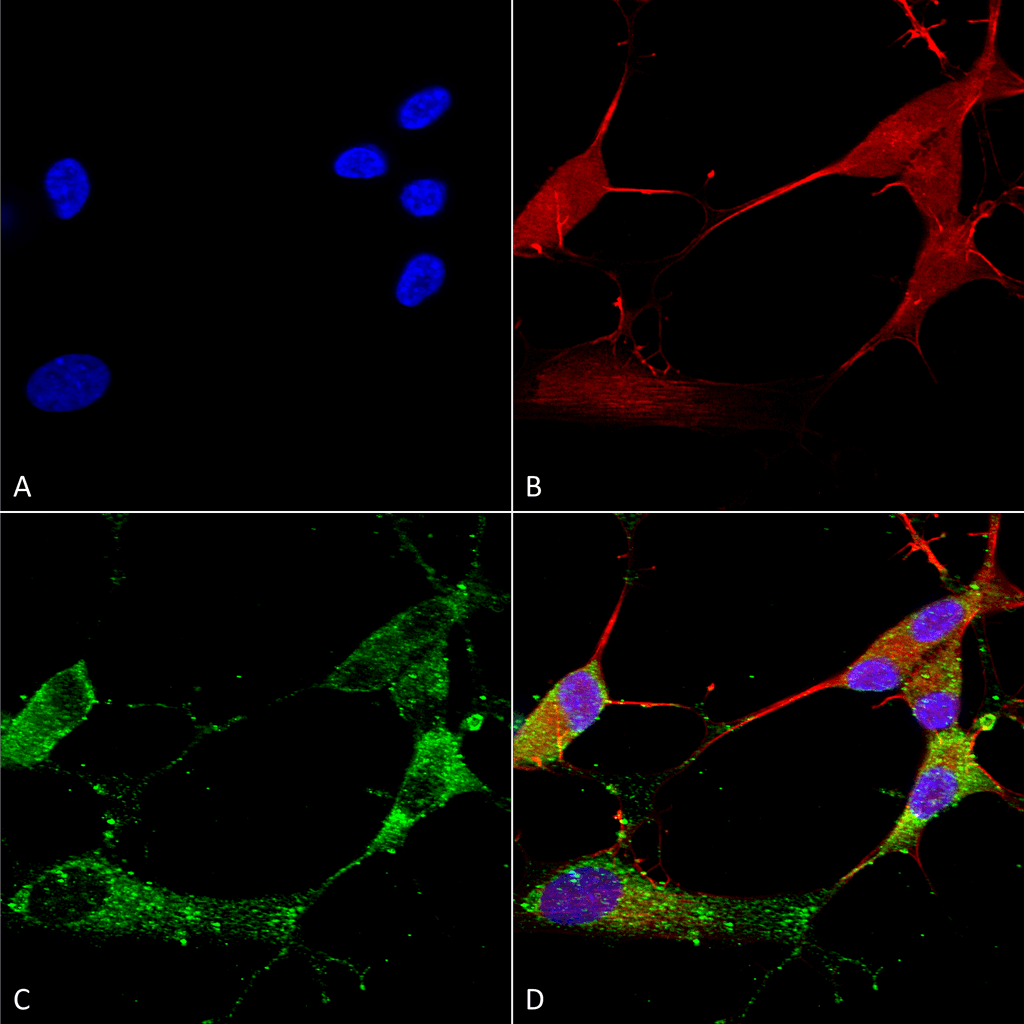
Immunocytochemistry/Immunofluorescence analysis using Mouse Anti-TARP Gamma2/4/8 (Stargazin) Monoclonal Antibody, Clone N245/36 (SMC-422). Tissue: Neuroblastoma cells (SH-SY5Y). Species: Human. Fixation: 4% PFA for 15 min. Primary Antibody: Mouse Anti-TARP Gamma2/4/8 (Stargazin) Monoclonal Antibody (SMC-422) at 1:100 for overnight at 4°C with slow rocking. Secondary Antibody: AlexaFluor 488 at 1:1000 for 1 hour at RT. Counterstain: Phalloidin-iFluor 647 (red) F-Actin stain; Hoechst (blue) nuclear stain at 1:800, 1.6mM for 20 min at RT. (A) Hoechst (blue) nuclear stain. (B) Phalloidin-iFluor 647 (red) F-Actin stain. (C) TARP Gamma2/4/8 (Stargazin) Antibody (D) Composite.
![<p>Western blot of rat brain lysate showing detection of ~55 kDa TARP Gamma2-4-8 protein using Anti-Tarp Gamma2-4-8 antibody [N245/36] (SMC-422). Lane 1: MW ladder. Lane 2: Anti-TARP Gamma2-4-8 (1:100). Lane 3: Anti-TARP Gamma2-4-8 (1:250). Lane 4: Anti-TARP Gamma2-4-8 (1:500). Lane 5: Anti-TARP Gamma2-4-8 (1:1000). Load: 20 µg RB lysate per lane. Block: 5% milk + TBST 1hr at RT. Primary antibody: Mouse Anti-TARP Gamma2-4-8 primary antibody [245-36] (SMC-422) incubated for 60 min at RT. Secondary antibody: Goat Anti-Mouse HRP antibody at 1:50 for 60 min at RT. Colour Development: TMB solution for 30 min at RT. Predicted/Observed size: ~ 55 kDa. Other band(s) (faint): ~37kDa, ~40kDa, ~75kDa.</p>](https://www.stressmarq.com/wp-content/uploads/SMC-422_Stargazin-Calcium-Channel_Antibody_N245-36_WB_Rat_brain-lysates_1.png)
Western blot of rat brain lysate showing detection of ~55 kDa TARP Gamma2-4-8 protein using Anti-Tarp Gamma2-4-8 antibody [N245/36] (SMC-422). Lane 1: MW ladder. Lane 2: Anti-TARP Gamma2-4-8 (1:100). Lane 3: Anti-TARP Gamma2-4-8 (1:250). Lane 4: Anti-TARP Gamma2-4-8 (1:500). Lane 5: Anti-TARP Gamma2-4-8 (1:1000). Load: 20 µg RB lysate per lane. Block: 5% milk + TBST 1hr at RT. Primary antibody: Mouse Anti-TARP Gamma2-4-8 primary antibody [245-36] (SMC-422) incubated for 60 min at RT. Secondary antibody: Goat Anti-Mouse HRP antibody at 1:50 for 60 min at RT. Colour Development: TMB solution for 30 min at RT. Predicted/Observed size: ~ 55 kDa. Other band(s) (faint): ~37kDa, ~40kDa, ~75kDa.
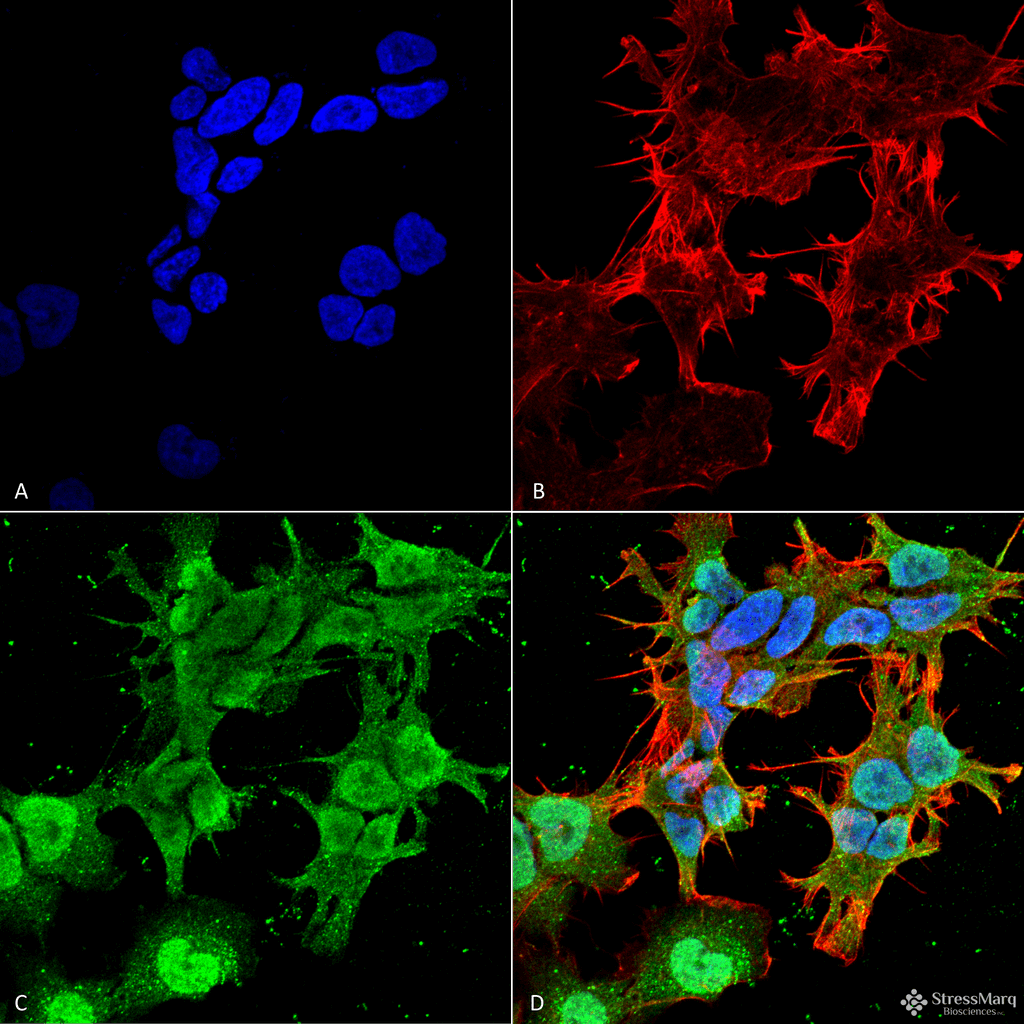
Immunocytochemistry/Immunofluorescence analysis using Mouse Anti-TARP Gamma2/4/8 (Stargazin) Monoclonal Antibody, Clone N245/36 (SMC-422). Tissue: Neuroblastoma cell line (SK-N-BE). Species: Human. Fixation: 4% Formaldehyde for 15 min at RT. Primary Antibody: Mouse Anti-TARP Gamma2/4/8 (Stargazin) Monoclonal Antibody (SMC-422) at 1:100 for 60 min at RT. Secondary Antibody: Goat Anti-Mouse ATTO 488 at 1:100 for 60 min at RT. Counterstain: Phalloidin Texas Red F-Actin stain; DAPI (blue) nuclear stain at 1:1000, 1:5000 for 60min RT, 5min RT. Localization: Cell Membrane, Nucleus. Magnification: 60X. (A) DAPI (blue) nuclear stain. (B) Phalloidin Texas Red F-Actin stain. (C) TARP Gamma2/4/8 (Stargazin) Antibody. (D) Composite.

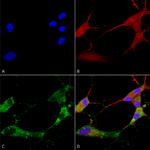
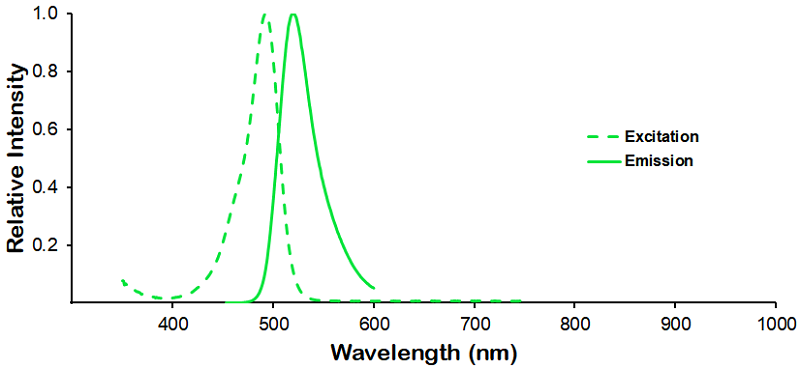
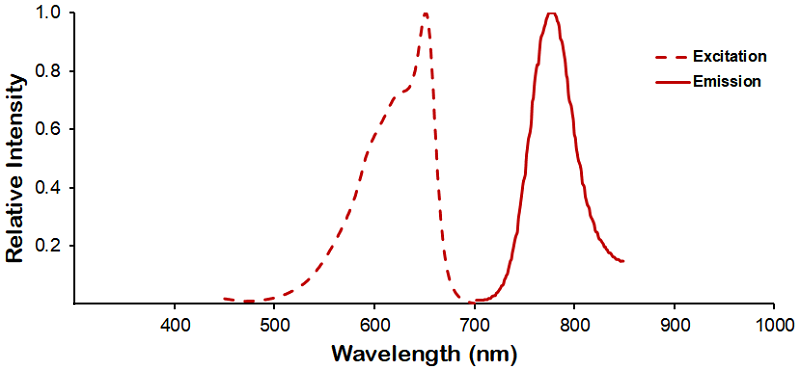
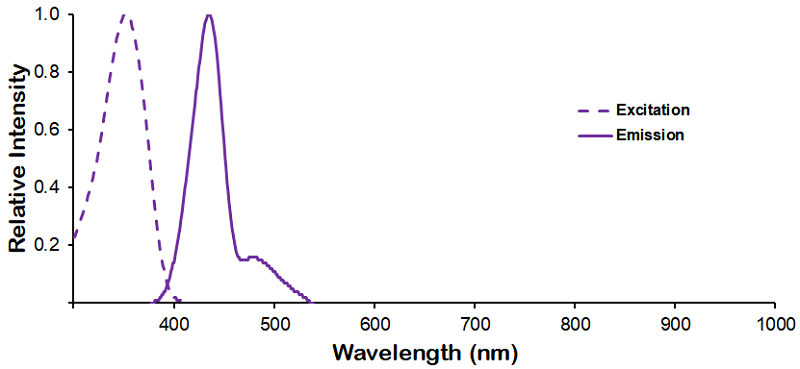
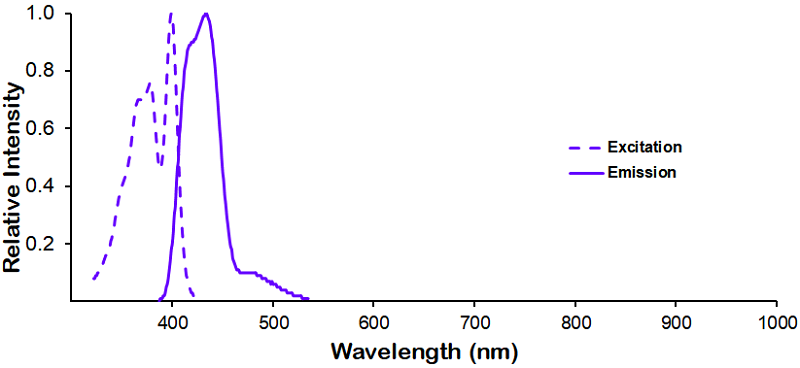
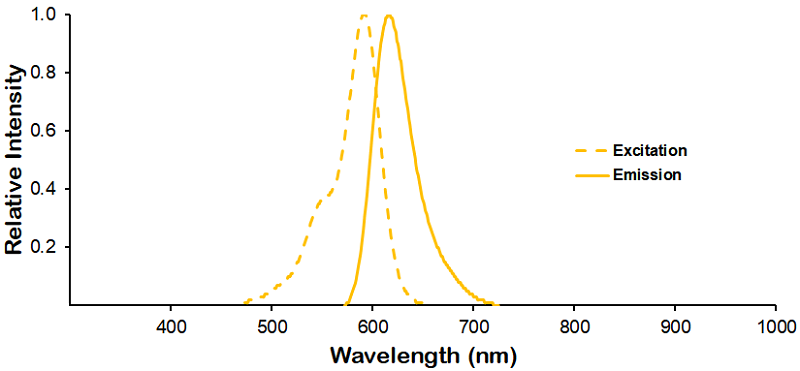

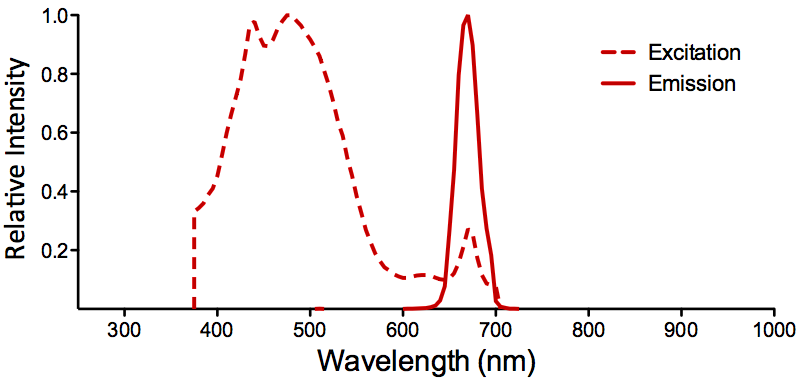
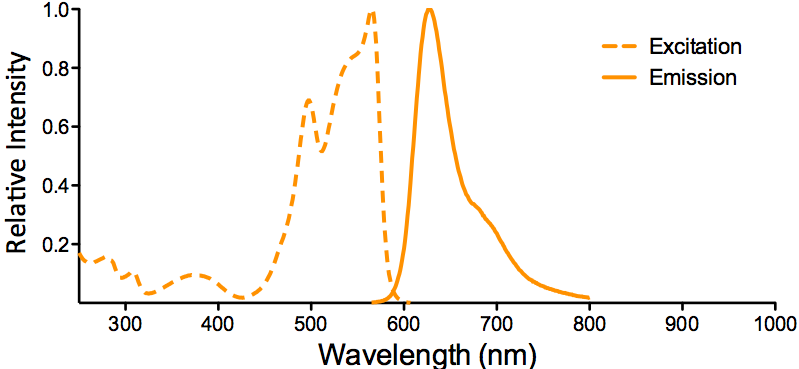
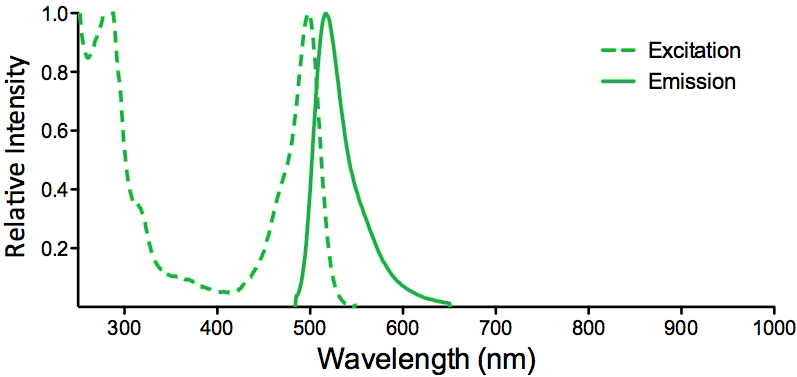
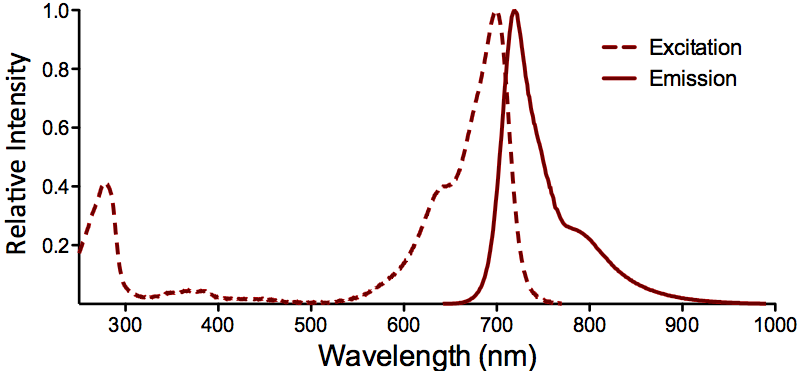
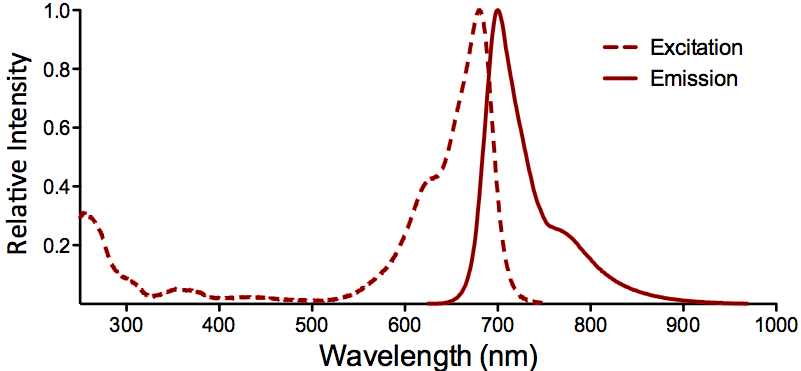

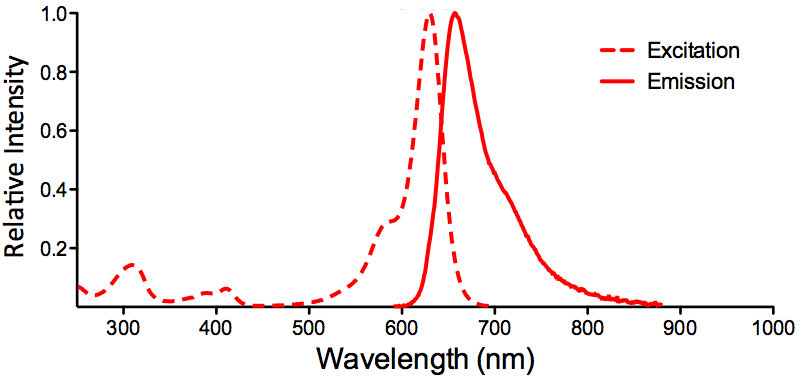
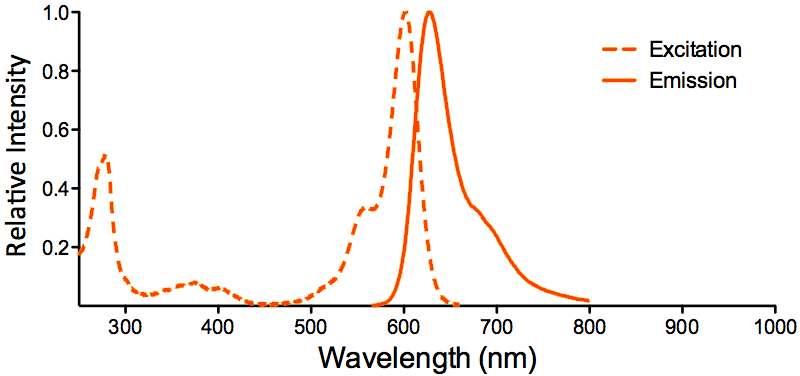

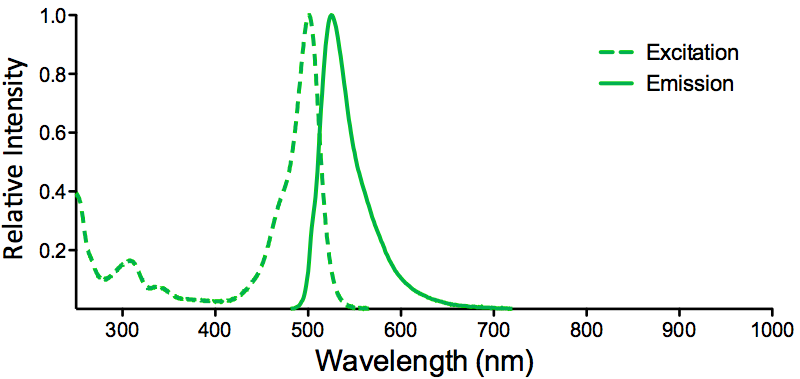
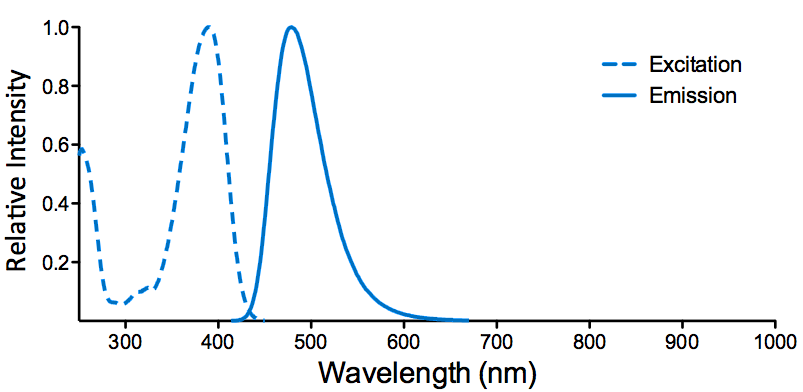
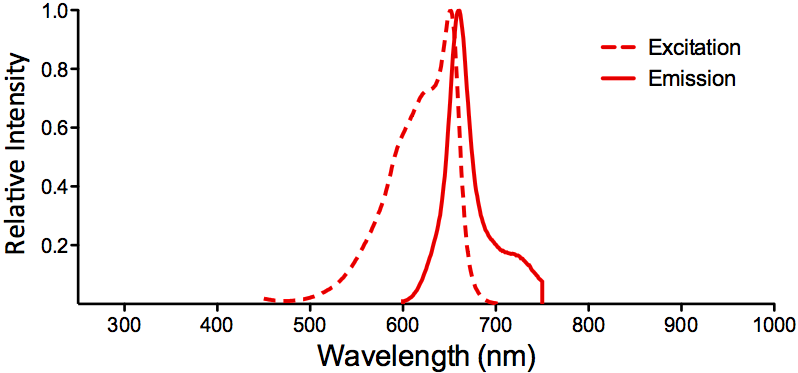
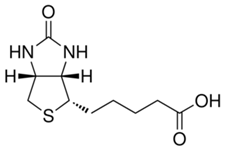
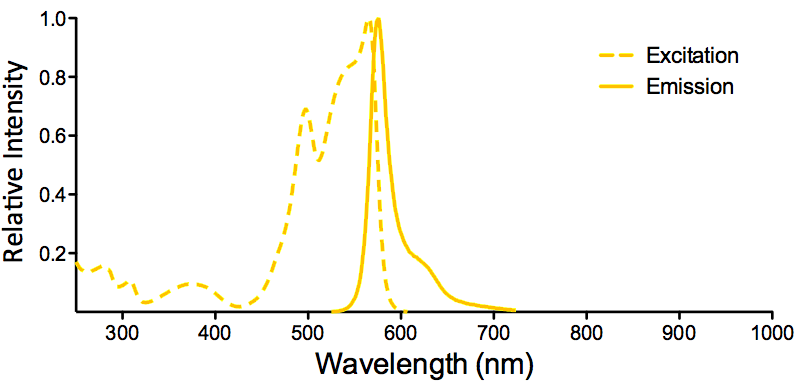
StressMarq Biosciences :
Based on validation through cited publications.